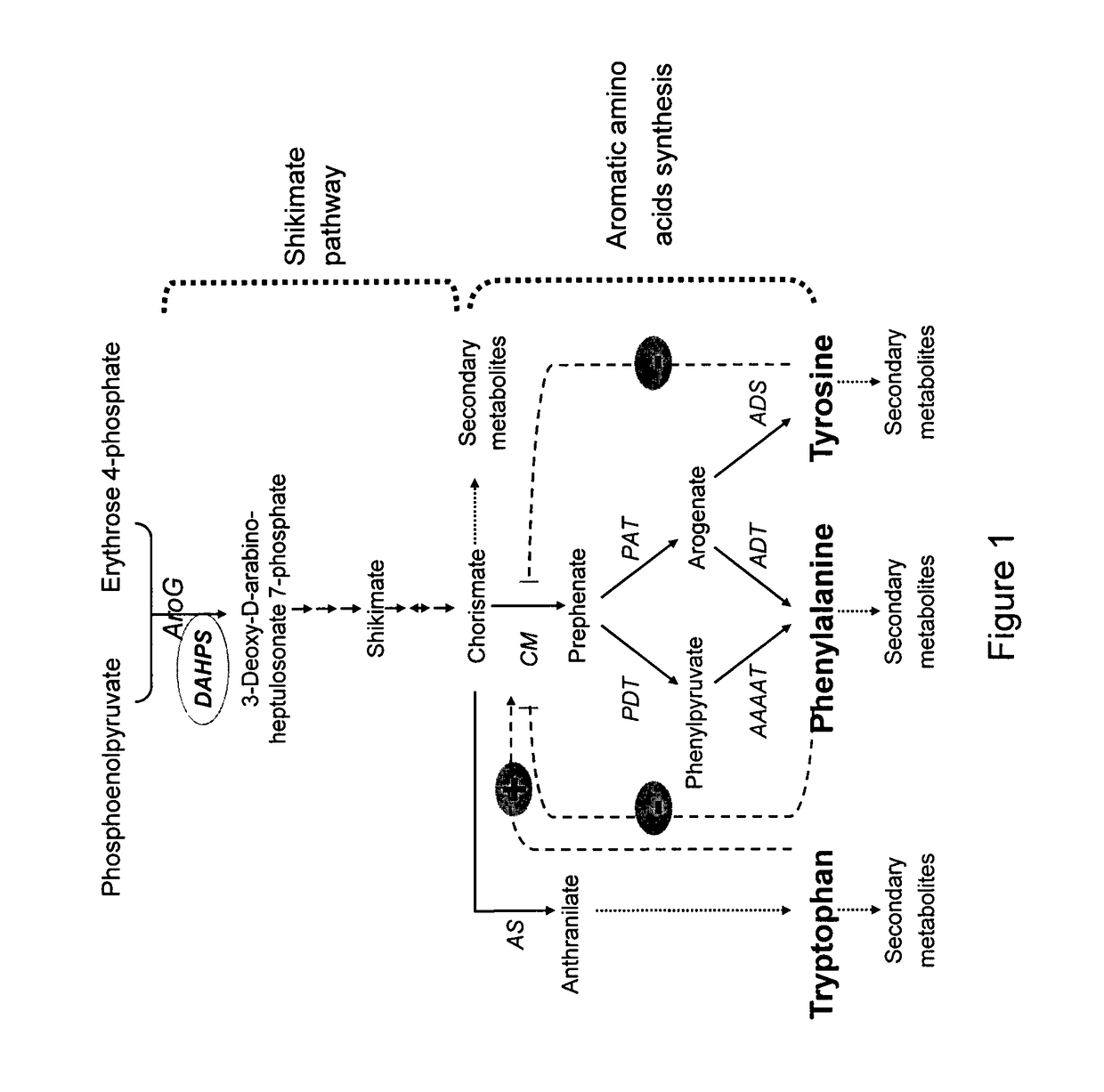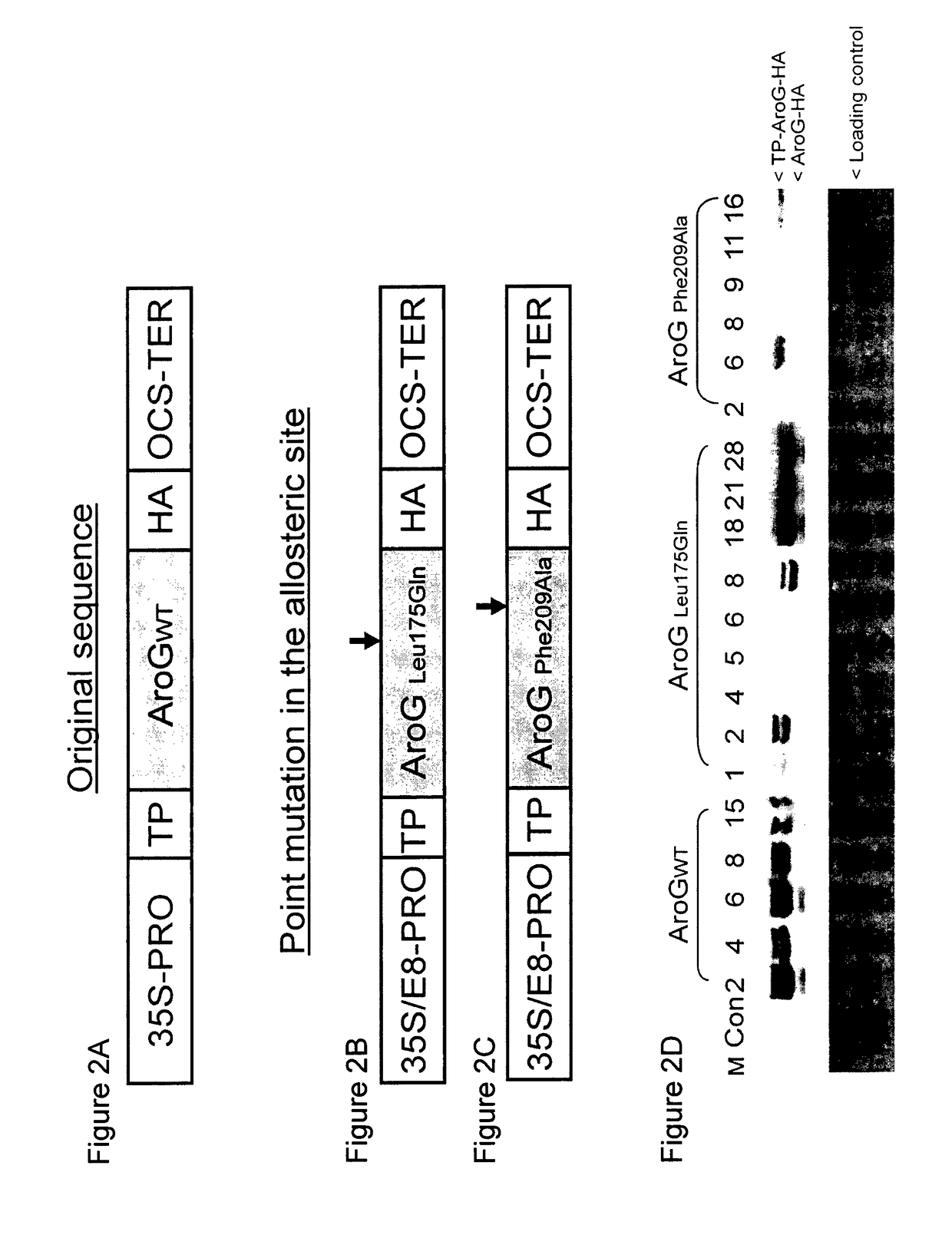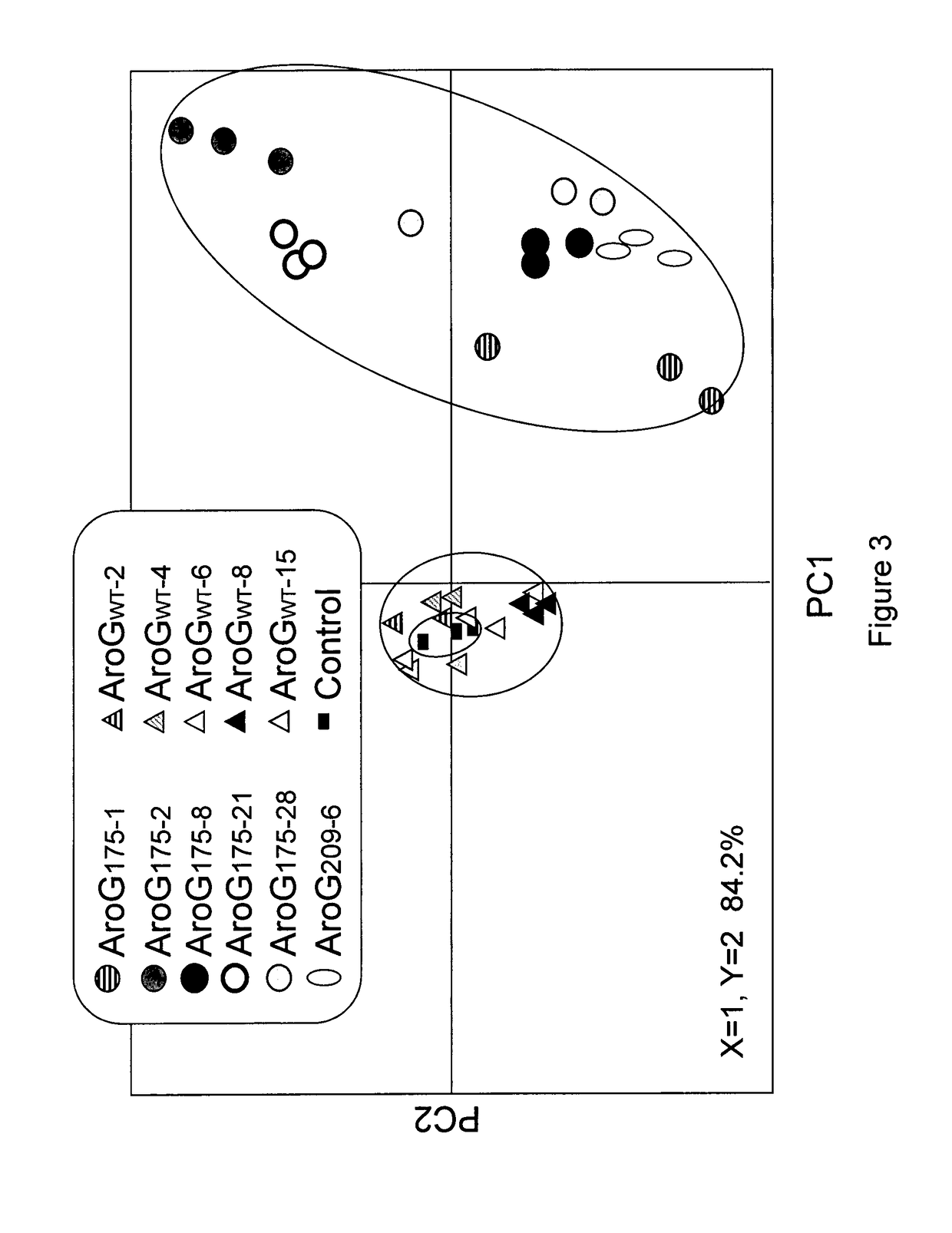Transgenic plants having altered DAHP synthase activity
a technology of plant dahps and synthase activity, which is applied in the direction of transferases, lyases, enzymology, etc., can solve the problems of still questionable allosteric regulation of plant dahps, and achieve the effect of convenient detection of recombinant polypeptides
- Summary
- Abstract
- Description
- Claims
- Application Information
AI Technical Summary
Benefits of technology
Problems solved by technology
Method used
Image
Examples
example 1
Generation of Transgenic Arabidopsis Plants Expressing a Bacterial Feedback Insensitive Dahps Enzyme and Initial Metabolic Analyses
[0137]To study the importance of DAHPS in regulating fluxes bridging primary and secondary metabolism in plants, Arabidopsis plants were transformed with either a chimeric AroGWT or a chimeric AroG175 or AroG209 genes (FIG. 2, panels A, B and C respectively) encoding the plastid-targeted WT and feedback-insensitive bacterial DAHPS enzymes, respectively (Hu et al. 2003, supra). Targeting the bacterial enzymes to the plastid, where the Shikimate pathway operates in plants, was obtained by an in-frame fusion of a DNA encoding a plastid transit peptide at the 5′ end of the coding DNA sequences of the two chimeric genes. The chimeric genes were also fused in frame at their 3′ to a DNA encoding hemagglutinin (HA) epitope tag (FIG. 2 A-C), to allow the detection of the recombinant genes in the transgenic plants. To examine the polypeptides produced by the chime...
example 2
Metabolic Analysis of Arabidopsis Plants Expressing the AroG175 Gene
[0140]The effect of AroG175 expression on a wide range of primary and secondary metabolites was examined in two independently transformed homozygous AroG175 line, AroG175-2 and AroG175-21. These lines expressed either medium (AroG175-2) or relatively high (AroG175-21) level of the AroG175 polypeptide (FIG. 2D), and contained a single insertion, based on their 3:1 segregation for antibiotic resistance. Aerial tissues of 10 days old seedlings of these two lines as well as the control genotype were subjected to both GC-MS and targeted and non-targeted liquid chromatography-mass spectroscopy (LC-MS) analyses. PCA plot of the GC-MS data displayed significant separation between the two AroG175 genotypes and the control genotype (FIG. 3). Furthermore, PCA of the LC-MS data demonstrated a relatively small separation between the AroG175-2 and the control line, while a considerably higher separation between the AroG175-21 and...
example 3
Generation of Transgenic Tomato Plants Expressing a Bacterial Feedback Insensitive Dahps Enzyme and Initial Metabolic Analyses
[0144]To study the importance of DAHPS in regulating fluxes bridging primary and secondary metabolism in plants, tomato plants were transformed with either a chimeric AroG175 or AroG209 genes (FIG. 2, panels B and C respectively) encoding the insensitive bacterial DAHPS enzymes. Targeting the bacterial enzymes to the plastid, where the Shikimate pathway operates in plants was obtained by an in-frame fusion of a DNA encoding a plastid transit peptide at the 5′ end of the coding DNA sequences of the two chimeric genes. The chimeric genes were also fused in frame at their 3′ to a DNA encoding hemagglutinin (HA) epitope tag (FIG. 2 B-C). T1 tomato plants were genetically tested for the presence of AroG insertion and kanamycin resistance (data not shown). The transgenic AroG175 and AroG209 expressing plants had comparable phenotypes to the control plants and were ...
PUM
| Property | Measurement | Unit |
|---|---|---|
| pH | aaaaa | aaaaa |
| nucleic acid | aaaaa | aaaaa |
| volatile | aaaaa | aaaaa |
Abstract
Description
Claims
Application Information
 Login to View More
Login to View More - R&D
- Intellectual Property
- Life Sciences
- Materials
- Tech Scout
- Unparalleled Data Quality
- Higher Quality Content
- 60% Fewer Hallucinations
Browse by: Latest US Patents, China's latest patents, Technical Efficacy Thesaurus, Application Domain, Technology Topic, Popular Technical Reports.
© 2025 PatSnap. All rights reserved.Legal|Privacy policy|Modern Slavery Act Transparency Statement|Sitemap|About US| Contact US: help@patsnap.com



